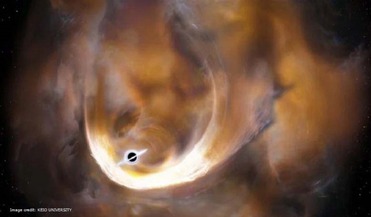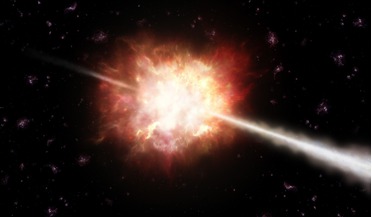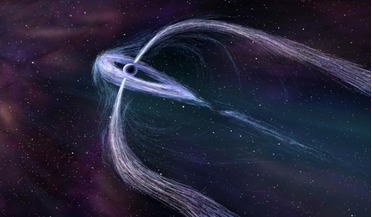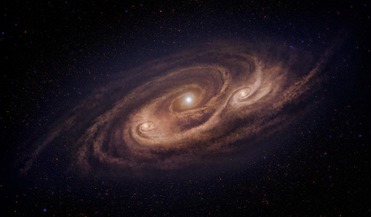 18 January 2016
Does a second black hole lurk near the centre of the Milky Way?
18 January 2016
Does a second black hole lurk near the centre of the Milky Way?
...not find any corresponding compact objects, a wide velocity dispersion caused by a local energy input, such as a supernova explosion, was ruled out. Further analysis of CO-0.40-0.22 using simulations of gas clouds attracted by a strong gravity source...
 January 2022
Revealing the magnetic universe
January 2022
Revealing the magnetic universe
... that the amplification of this ‘seed’ field, for example via galaxy formation, mergers, accretion flows and supernovae explosions, as well as the feedback associated with all these processes, is required to produce the field we observe today. This...
 11 July 2016
Short gamma-ray burst is from a binary neutron star coalescing into a black hole say researchers
11 July 2016
Short gamma-ray burst is from a binary neutron star coalescing into a black hole say researchers
... neutron star (MNS) and how the different GRB energies can be separated from those associated with supernova explosions. The updated work on the fireshell theory has been instrumental in allowing the team to not only confirm...
 18 January 2017
The unusual tails of a pulsar give a clue as to what type of pulse it generates
18 January 2017
The unusual tails of a pulsar give a clue as to what type of pulse it generates
... perspective. Pulsars are highly magnetised, fast spinning neutron stars – the highly dense remnants leftover from a supernova explosion – that can complete one rotation in less than a couple of seconds. One such object first discovered 10 years...
 13 July 2018
Neutrino discovery helps resolve a century-old riddle
13 July 2018
Neutrino discovery helps resolve a century-old riddle
... of the fuss over a minuscule, barely-there particle that doesn’t want to be found? Although neutrinos are created in supernova explosions and in the cores of stars like our Sun, the greatest source of neutrinos happened some 15 billion years...
 30 August 2018
Unstoppable monster galaxy puzzles and enlightens astronomers
30 August 2018
Unstoppable monster galaxy puzzles and enlightens astronomers
..., the gas cloud collapses and stars start popping out at a rapid pace. However, as the stars and supernova explosions start blasting out gases at the ends of their lives, it adds to the outward pressure. The cloud therefore...